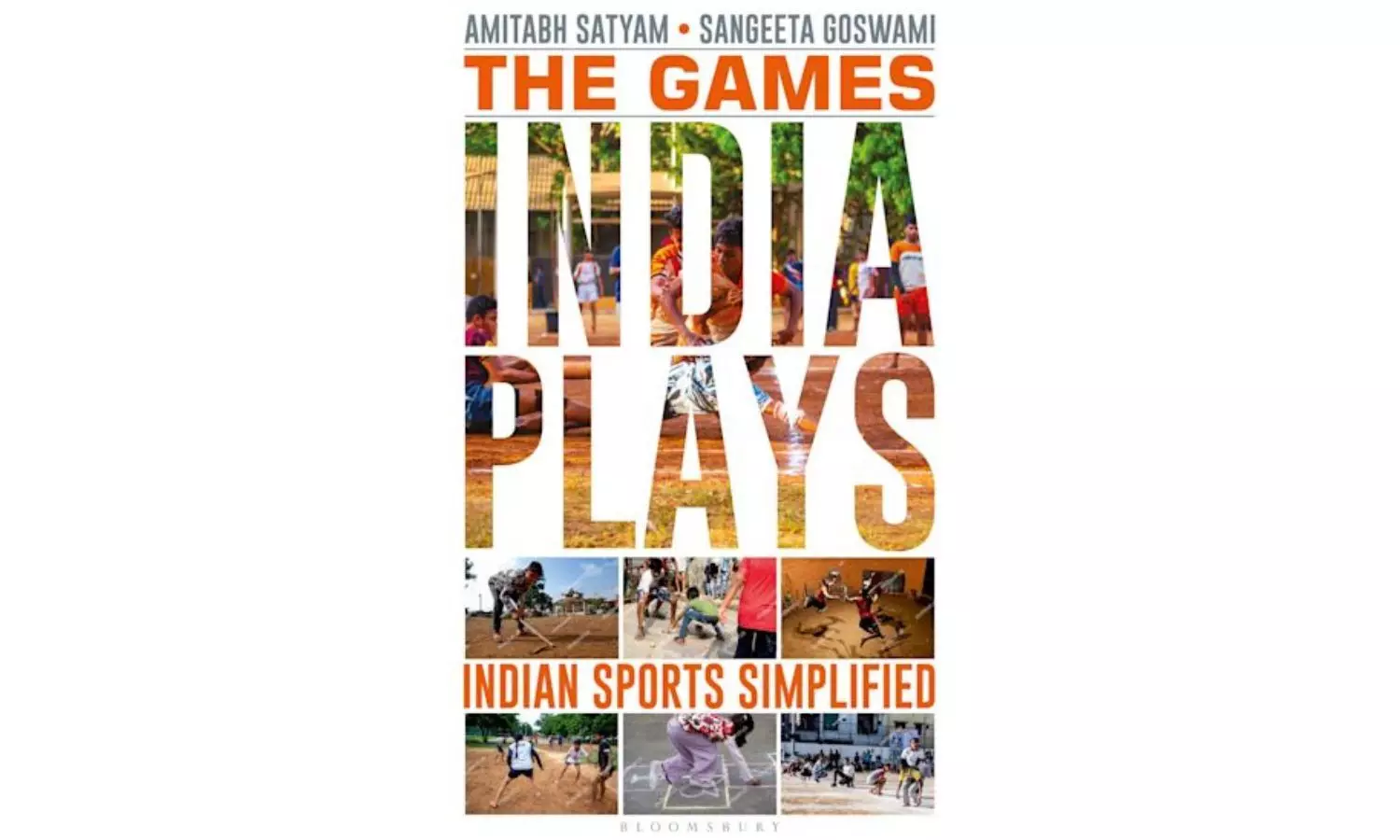Straight Out Of Pages
Book features games hinterland of India grew up playing
A new book talks about 15 traditional or indigenous games that hinterland of India has grown up playing

Book "The Games India Plays Indian Sports Simplified" by Amitabh Satyam and Sangeeta Goswami
A new book talks about 15 traditional or indigenous games that hinterland of India has grown up playing but now have somewhat vanished from the urban landscape.
"The Games India Plays: Indian Sports Simplified" by Amitabh Satyam and Sangeeta Goswami features traditional Indian games that are entertaining, intellectually stimulating, educational and which can be played almost anywhere with minimal equipment. The 15 such games mentioned in the book, published by Bloomsbury India, are Kabaddi, Kho-Kho, Gilli Danda, Lagori, Nondi, Nalugu Rallu Atta, Yubi Lakpi, Nadee Parvat, Cheel Jhapatta, Jod Saakli, Vish Amrut, Langdi, Gella Chutt, Atya-Patya and Pacha Kuthirai.
The authors say these games have been selected after extensive research. Some of the features of these games are - a detailed set of rules for each step during the game; many variations that allow possibilities to develop while playing, thus inviting players to innovate; fun to play with a large number of possible outcomes, maximising the involvement of each player at all times during the play. The book also says that these games can be played with no or minimal equipment and without any planning.
They have established rules; some can be customised or relaxed depending on the field, the number of players and the equipment available. The authors also seek to establish a connection of these games to our ancient culture and assert that preserving these indigenous games is akin to preserving our culture. Satyam and Goswami, however, rue that these games have been almost eliminated from the active consideration of Indians.
"Rich urban Indians just follow the West. Sports means the ones played in the West at the Olympics. Poor urban Indians aspire to do what the urban rich do. Similarly, people from smaller towns look up to urban Indians. Villagers are out of the equation. Over time, a sense has developed that their life, culture and life is not up to the mark, and city folks are the people to take directions from," they argue. The authors also bat for schools creating space for Indian games in their premises.
"Expensive schools invest in developing Western sports facilities. They must consider creating space for Indian games or sharing space with a tennis or basketball court. A tennis court is good for only two players, whereas the same space can be used by dozens of players playing Indian games," they write. "Our games are fun and interesting and can be played conveniently. They cost nothing or almost nothing to play, especially the games we have selected.
Encouraging these games will allow the players to receive all the benefits mentioned earlier and will require almost no investment. The investment required in lakhs of crores of rupees for building thousands of tennis courts, cricket stadiums and swimming pools is not needed," they say. According to them, Indian games give, say, a hundred times better return on investment. "Investment in Western games does help win some medals in international competitions, such as the Olympics. However, if we wish to build character, develop team spirit and provide physical exercise, then Indian games are as good or better than the Western ones," they argue.
